Archive of Acorus, Doyenne of Grasses.
Acorus teaches Mibora how to become grass. No easy task, after all there are 17 different species in the grassland. And only the Doyenne of Grasses masters them all.
-
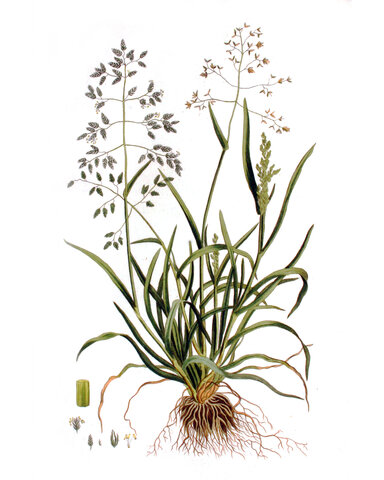
Annual Bluegrass (Poa annua)
This is the first grass that the Doyenne of Grasses teaches Mibora. For good reason, after all, it is the most widespread grass of the Grassland. This species belongs to the genus of meadow grasses within the family of sweet grasses.
Annual bluegrass self-pollinates with the help of wind and has no particular flowering season; it can bloom even in snow. Wind and some species of ants help this plant to spread. It forms small clumps with low growth heights of five to a maximum of 30 centimeters.
-

Sawtooth Sedge (Cladium mariscus)
Sawtooth sedge is an integral part of the Green Shadows’ initiation ritual. It owes its name to the sharply toothed, rigid leaves that can cause injuries even when touched lightly.
This plant belongs to the sedge genus within the sour grass family and reaches stately growing heights of 80 to 200 centimeters. It loves the edges of small standing waters and grows there winter-green behind the reed belt.
At the same time sawtooth sedge is extremely rare in the Grassland. The secret of its location is well guarded by the Sisterhood of the Green Shadows.
-
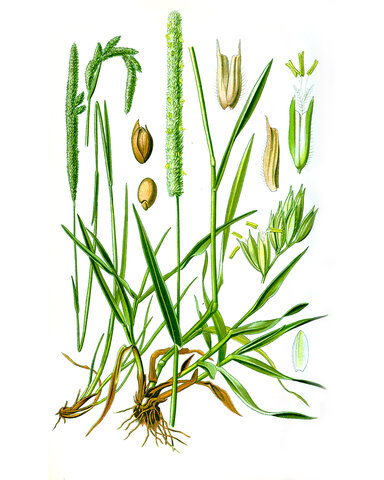
Timothy (Phleum pratense)
Timothy grass belongs to the sweet grass family. It grows 30 to 100 centimeters tall and forms loose clumps on the Great Plain as well as at the edge of the forest.
Timothy blooms from the sixth to the ninth moon. Its stalks taste slightly sweet when chewed. The pollen of this grass species causes hay fever.
-
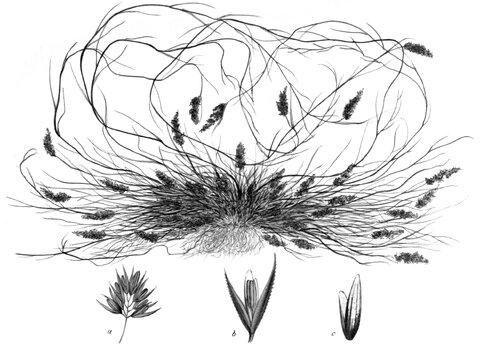
Carpet Bentgrass (Agrostis stolniferna)
This grass species belongs to the genus of bunchgrasses within the family of sweet grasses. It is evergreen, perennial and common in the Grassland.
Carpet Bentgrass likes moist, nutrient-rich soils and reaches growth heights of eight to 40 centimeters. It is found on the Great Plain, along the creeks and along the river. It blooms in the seventh and eighth moons, spreading by above-ground stolons to form dense lawns.
-
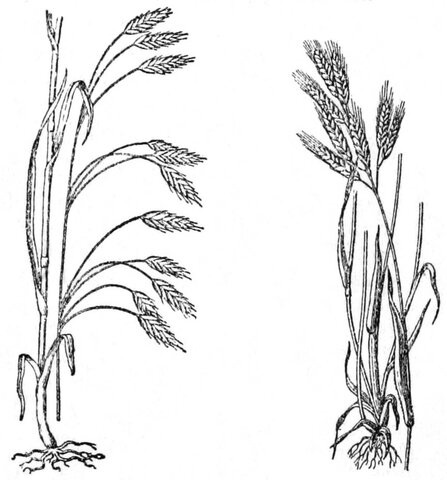
Downy Brome (Bromus tectorum), Field Brome (Bromus arvensis)
Brome grasses are members of the sweet grass family and are represented in the Grassland by two species that, although not common, can be found in the plant landscape from time to time.
Downy brome (Bromus tectorum, pictured left) is an annual herbaceous plant ten to 60 centimeters tall. It grows singly or in small groups in dry, warm, moderately nutrient-rich soils such as are found along meadow edges. Its flowering period is between the fifth and seventh moons.
Field brome (Bromus arvensis, pictured right) grows nearly twice as tall and is much rarer. If anything, it is found in nutrient-rich meadows.
-
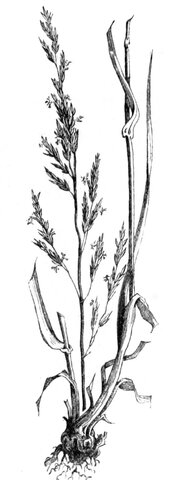
Meadow Fescue (Festuca pratensis)
Almost everywhere in the Grassland there is meadow fescue. The plant forms loose clumps and reaches 30 to 120 centimeters in height. The short flowering period ranges from the sixth to the seventh moon.
Meadow fescue prefers moist, foggy and dewy sites in open meadows, rarely under trees. Sandy soils are colonized only if they are calcareous, moist and nutrient-rich. The plant is hardy, not sensitive to salt, and can survive prolonged overstory; however, it does not tolerate prolonged drought or heavy shade.